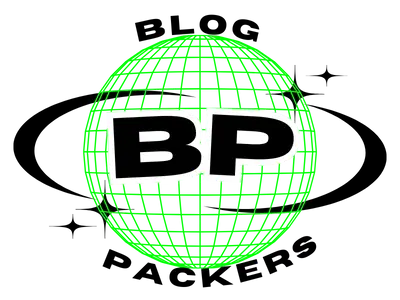When you think of bananas, what comes first in your mind? Probably a delicious fruit, a banana chip or may be a banana bread. But here, we will show you something fascinating that will blow your mind.
Since long, banana fibers have been used in different parts of Asia and Africa for textiles and ropes, but now, innovators across the world are rediscovering their eco-friendly potential and turning banana fiber into paper, bags, carpets, packaging and even sanitary pads.
With the growing concerns of plastic pollution, textile waste and climate change, banana fiber has stepped into the spotlight as a sustainable alternative to synthetic or non-biodegradable materials.
In this post, we will explore 11 amazing banana fiber products that not only reduce carbon footprint but also bring style, functionality and innovation to our daily lives.
Whether you are an eco-conscious consumer, a curious shopper or just love to know about green innovations, this blog will show you why banana fiber is the future of packaging.
What Is Banana Fiber?
Before we jump into the products made from banana fiber, let’s understand from where it comes.
Banana fiber is extracted from the pseudostem (the thick, fleshy trunk) of the banana plant. After harvesting banana fruits, the pseudostems are usually discarded and allow it for decomposition. But instead of discarding it as waste, it can be processed to get long and silky fibers.
These fibers are then transformed into textiles, paper, ropes, packaging, biofertilizers and more.
Read more about banana fiber production here.
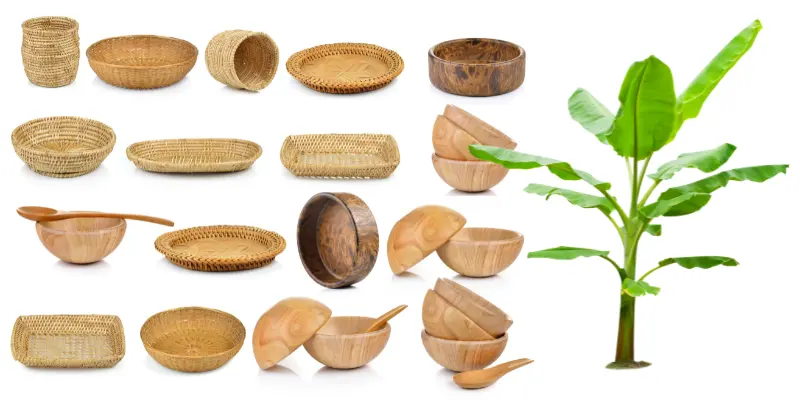
Why Banana Fiber Matters
Here are a few reasons why banana fiber is gaining global attention.
Sustainability: It is extracted from the waste material of banana plant.
Biodegradability: It breaks down naturally without harming the environment.
Rural empowerment: It provides additional income to farmers from agricultural waste.
Versatility: It can be used in multiple industries, such as packaging, textile, automobile and agriculture.
11 Awesome Banana Fiber Products
1. Molded Paper Food Containers
For a long time, restaurants and food stalls have been using Styrofoam and plastic containers for food packaging.
But most of these plastic containers contain harmful chemicals like BPA (Bisphenol A) and phthalates, which are known to be carcinogenic.
These harmful chemicals can leach into food, especially when it is hot or oily, leading to serious health risks over time.
That’s where banana fiber molded paper containers come into the picture as a safe and smart packaging solution.
These paper-based containers are
- Sturdy and heat-resistant
- Leak-proof for oily or liquid foods
- Free from toxic chemicals, eliminating the risk of food contamination
- Compostable and biodegradable

Whether it is for a party celebration, a takeaway order or a catering event, banana fiber containers offer the best sustainable option to non-biodegradable materials.
So next time when you are supposed to serve food, think about people and planet.
2. Banana Fiber Paper for Painting
Artists and crafters are falling in love with banana fiber paper because of its textured and earthy feel that adds value to the paintings, calligraphy or crafts.
It is stronger than regular paper and absorbs colour beautifully.
Plus, it is made from waste materials, so you are saving trees or forests while expressing your art.

A Greener Alternative to Wood-Based Paper
Till now, traditional painting papers are made from wood fibers, which contain a lot of lignin and pectin as compared to banana fibers. So, turning wood fibers into paper requires high heat, plenty of water and chemicals, contributing to a bigger carbon footprint.
In contrast, banana fiber paper is made from the byproducts of banana farming and requires less energy, water and chemicals to make paper.
3. Banana Fiber Fabric for Clothing
Banana fiber can be spun into soft and breathable yarn to make fabrics that are:
- Lightweight and airy
- Shine like silk
- Fully biodegradable
By knowing these properties, designers are now creating sarees, scarves, shirts, dresses and home textiles from soft and silky banana fibers.
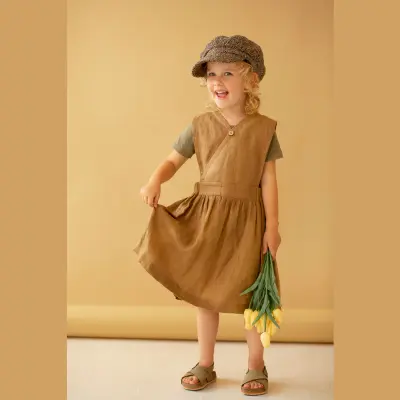
In countries like India, the Philippines and Japan, banana silk has been used from long time, but now, it is making global waves in fashion industries.
Plus, banana fabric can be a healthier choice for you than synthetic clothing fabrics.
Synthetic fabrics like polyester or nylon are often processed with toxic chemicals and many of those chemical residues remain in the finished clothing even after multiple washes.
As a result, when you sweat, especially in hot summer weather – those chemicals can start to leach out from the fabric and get absorbed by your skin.
Over time, this invisible exposure to chemical residues may contribute to skin irritation or other health issues without us even realizing it.
Natural plant-based textiles like banana fiber offer a safer alternative to these synthetic clothing fabrics since they are chemical free and made from plant-based material.
By choosing clothing fabrics made from banana fiber, you can reduce the risk of chemical absorption and support sustainable fashion.
4. Rope and Cordage for Marine Activities
Banana fiber is exceptionally strong (even stronger than hemp) and naturally resistant to saltwater, making it perfect for ropes and cordage used in marine activities.
Due to its high tensile strength and seawater resistance, it is widely used for ship ropes and fishing nets long before synthetic nylons were invented.
Additionally, banana-fiber ropes tend to float and hold up well in seawater, which is why they have been used in shipping cables, boat lines and fishing gear till now.
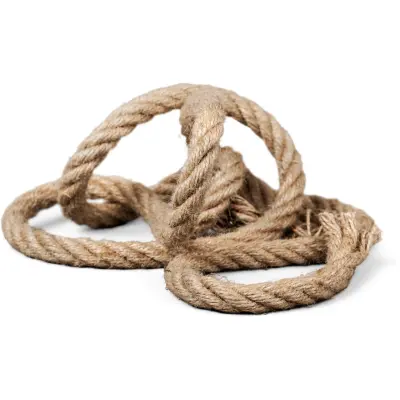
In the ocean, discarded plastic ropes and fishing nets are the deadliest forms of plastic pollution. Every year, arround 5,00,000 to 10,00,000 tons of plastic nets, lines and ropes are lost or discarded in the seas.
These discarded plastics not only pollute the ocean but also harm the marine life and gradually break down into microplastics, contaminating the food chain over time.
By contrast, banana fiber ropes and nets are biodegradable and compostable in nature without creating microplastics. This means a lost banana fiber will not become the fatal trap for marine creatures.
5. Banana Fiber Carpets and Doormats
Banana fiber carpets and doormats aren’t just beautiful – they are also a healthier and sustainable choice for your home and offices.
In contrast, many common synthetic carpets (like nylon or polypropylene) carry hidden health and environmental risks.

Let’s know how it is:
Banana Fiber Carpets are Free from VOC: Plastic-based carpet releases VOCs (volatile organic compounds) into your home’s air.
When you purchase new plastic-based carpet, it smells like formaldehyde and benzene. These chemical fumes can irritate your eyes, nose and throat, trigger asthma or allergic reactions and generally degrade indoor air quality.
In contrast, natural banana fiber products don’t emit those nasty VOCs since they are not made from petrochemicals or treated with toxic chemicals like formaldehyde and benzene.
Less Plastic Waste & Pollution: Most of the synthetic carpets are basically made from non-biodegradable plastics, like polyester and nylon. Even during usage, they can shed microscopic plastic fibers (microplastics) that pollute our homes and the environment.
With banana fiber carpets, you don’t have to worry.
It provides fresher air and a healthier home especially for children, pets and our aged parents who are highly sensitive to these allergens.
6. Banana Fiber Baskets
Are you Looking for a stylish and sustainable storage solution?
Banana fiber baskets come in all shapes and sizes — from fruit bowls and laundry hampers to planters and storage bins. They are lightweight yet strong, biodegradable and beautifully crafted.
Even global brands like IKEA have embraced banana fiber for its eco-friendly charm and durability, incorporating it into some of their most popular basket products.
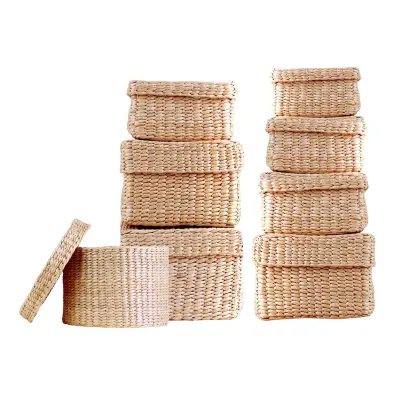
IKEA’s banana fiber baskets beautifully demonstrate that sustainable living can be stylish, too.
Along with banana fiber baskets, you can also explore other natural-fiber options like this Seville Classics Handwoven Laundry Bin crafted from water hyacinth — an eco-friendly and stylish choice for your home.
👉 Check the latest price on Amazon.
7. Banana Fiber Fashion Accessories (Hats, Bags, Belts, Jewelry)
You can now find bags, purses, wallets, belts, hats and even jewelry made from banana fiber. These pieces are not just unique and eye-catchy, they are also eco-friendly.
Imagine carrying a hat that is plant-based, plastic-free and supports fair-trade artisans that’s call true fashion with a purpose.
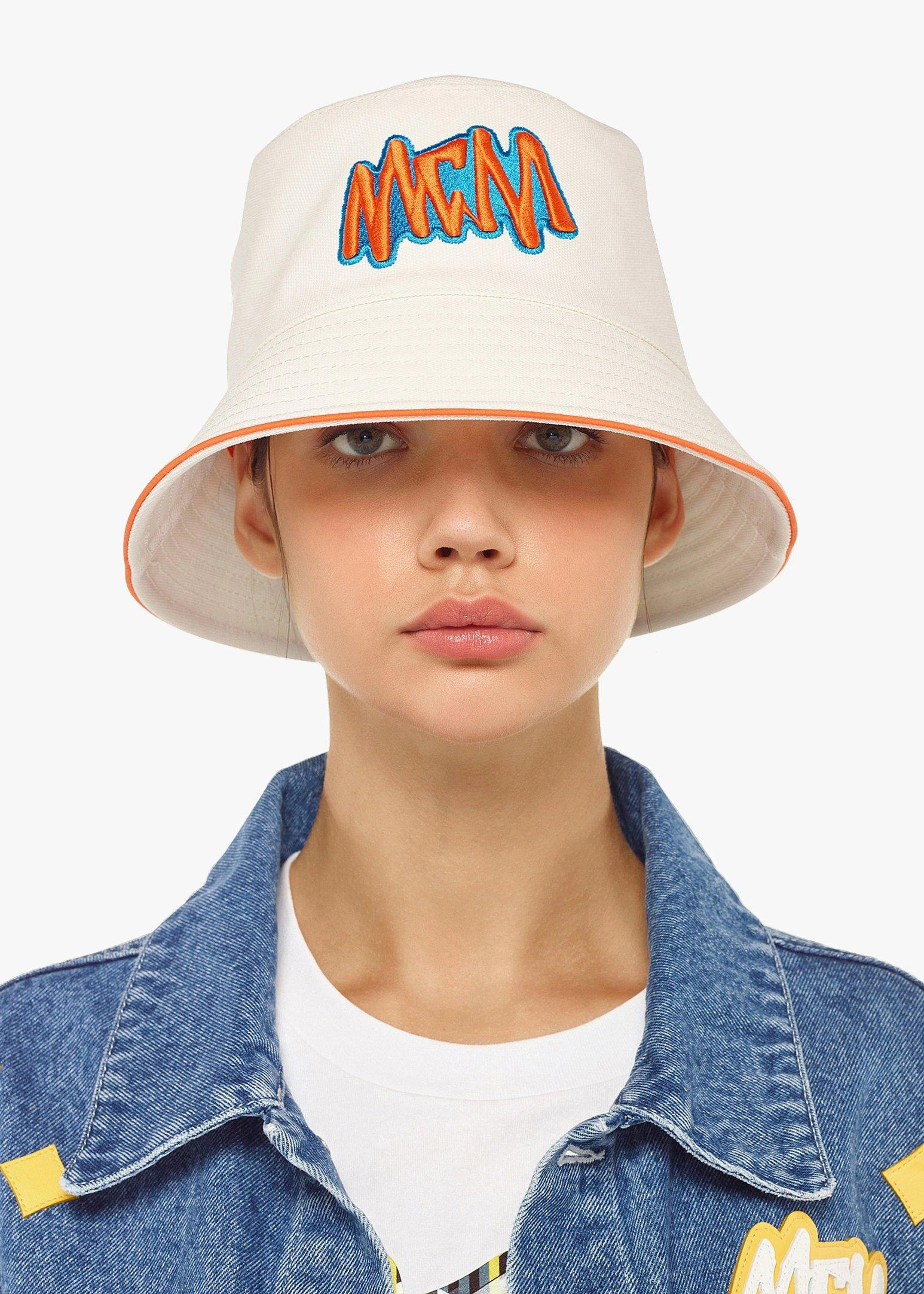
Here are a few benefits of banana fiber products over synthetic products:
Biodegradable & Plastic-Free: Banana fiber accessories are completely biodegradable, unlike plastic-based items that can persist in the environment for a longer time.
Lower Carbon Footprint: During the manufacturing process, banana fiber products use far less energy and toxic chemicals as compared to synthetic products. In fact, banana fiber is extracted from agricultural waste, so it is the classic example of upcycling that creates value from the waste.
Lightweight & Durable: Don’t underestimate banana fiber for its strong, flexible and water-resistant properties. Therefore, products made from banana fibers can handle everyday wear and tear forces.
By using banana fiber products, you can get a stylish accessory without harming the environment because you are carrying something made from plants, not from petroleum.
You are carrying something that will eventually return to the earth, not pollute the planet.
Plus, you will feel proud when you wear it every time.
8. Biofertilizer
Did you know banana plant waste can nourish other plants, too?
The leftover pulp and fibers from banana stems can be processed into organic biofertilizer. Let’s look at it.
Banana Plant Waste into Nutrient-Rich Biofertilizer
Instead of discarding banana plant waste, farmers can compost the leftover pulp and fiber into an organic biofertilizer.
This compost is rich in nutrients, like nitrogen, phosphorus, potassium, calcium, magnesium, zinc, and iron. When returned to fields, it improves soil structure and fertility, leading to healthier plant growth.
Research shows that banana waste compost can boost crop yields while reducing the need for chemical fertilizer.
By recycling banana residues into fertilizer, farmers not only nourish their crops naturally but also reduce dependency on costly chemical fertilizers (and the environmental harm those can cause).
Beyond compost, banana waste can also be transformed into biogas, providing renewable energy for farmers.
Through anaerobic digestion (fermentation in an oxygen-free digester), microorganisms break down banana stems, peels and leaves to produce biogas (a mixture rich in methane) that can be used as a fuel.
Farmers can use biogas for cooking, heating or even electricity generation, which is especially valuable in rural areas with limited electrical power supply.
By valorizing this waste, farmers can create natural fertilizer and biogas while reducing negative environmental impacts.
9. Banana Cellulosic Plastic Film
Researchers are transforming banana agricultural waste (such as banana stems and fibers) into cellulose-based bioplastic films that are biodegradable/compostable.
These films can be used for food packaging, shopping bags or even agricultural mulch films.
For example, entrepreneurs in places like French Polynesia and Cameroon have begun turning discarded banana plant fibers into eco-friendly bags and film packaging.
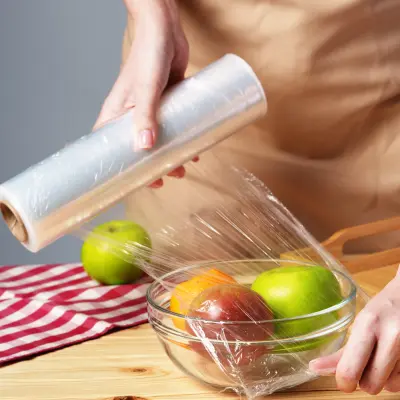
Optimal Breathability for Fruits and Vegetables:
A unique advantage of banana cellulose films is their optimum barrier properties that allow fruits and vegetables to “breathe.”
In contrast, petroleum-based plastic (e.g., polyethylene) has low gas permeability that can trap moisture and ethylene gas. For your information, ethylene gas is a natural ripening hormone that reduces the shelf life of fruits and vegetables.
Optimum breathability of banana cellulosic film helps to reduce the level of ethylene gas and moisture, so fruits and vegetables wrapped with this biofilm can remain fresh for a longer time while being compostable after use.
Research confirms that polyethylene (PE) wraps are “not suitable for long-term preservation” of certain fruits due to poor airflow, whereas cellulose-based films made from banana fibers are the best wrapping material.
10. Composite Bioplastics
Banana fiber can also be blended with biopolymers like PLA (polylactic acid) to create composite bioplastic materials that are tough, moldable and biodegradable.
In this composite bioplastic, the PLA matrix provides lightweight and biodegradable properties, while the banana fiber acts as a reinforcing fiber to boost strength and stiffness.
These composite bioplastics are being used in:
- Automotive parts
- Furniture
- Electronics casings
- Building materials
This opens a whole new world of sustainable design, where the parts we use can return to the earth after disposal.
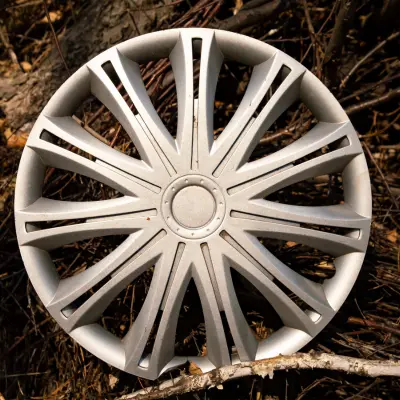
For instance, DaimlerChrysler (now Mercedes-Benz Group) introduced a banana-fiber-reinforced plastic in an exterior spare-wheel cover, demonstrating that natural fibers can replace glass fibers in car components.
The automotive industry values these composites because their lightweight parts can improve fuel efficiency and lower carbon emissions, aligning with green transportation goals.
11. Banana Fiber Sanitary Pads & Napkins
Let’s talk about something important yet often overlooked.
Millions of plastic-based sanitary pads are used and discarded daily, which are taking 500–800 years to decompose into microplastics.
These plastic-based sanitary pads and napkins are harmful to the environment and women too, as many commercial pads contain chemicals, fragrances and synthetic gels.

In contrast, banana fiber-based sanitary products are a powerful solution, which is natural, breathable and biodegradable.
Banana fiber is not only biodegradable but also naturally antimicrobial and breathable, reducing the risk of skin rashes and infections.
Some of these pads are home-compostable, while others are designed to break down within 6 months in soil — drastically reducing landfill pressure compared to regular pads.
Conclusion
From food containers to fashion, from ropes to biofertilizers, banana fiber is silently revolutionizing industries. It is a reminder that nature has already provided us with many solutions — we just need to find it wisely.
So, next time you shop for home goods, clothes, art supplies or packaging, look for banana fiber options. Each purchase sends a message: we care about the planet and we believe sustainability can be beautiful.
Let’s celebrate the power of the banana — not just on our plates, but in our homes, our wardrobes, and our lives.
What’s your favorite banana fiber product? Have you seen any cool innovations we missed? Share in the comments below!
